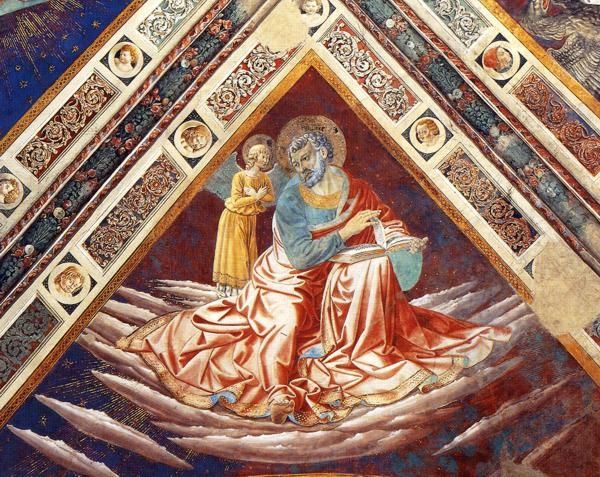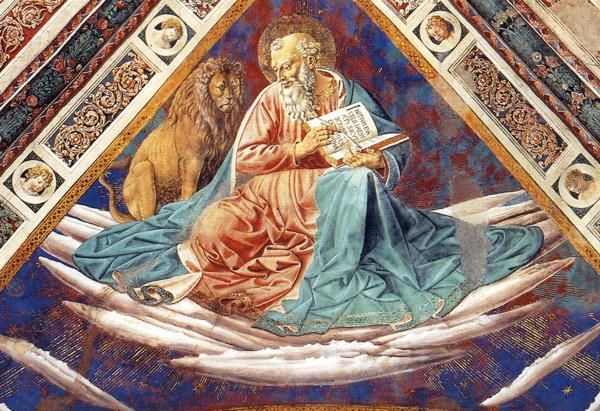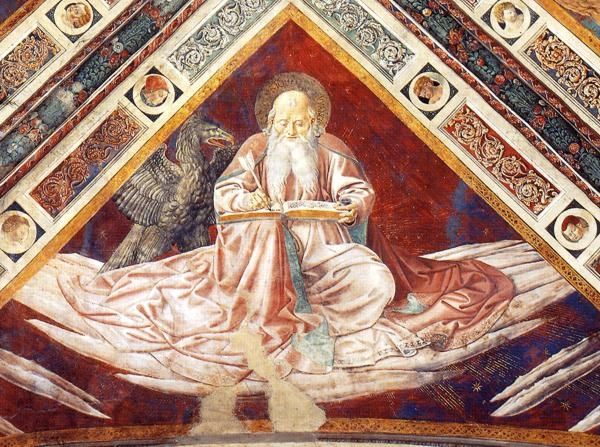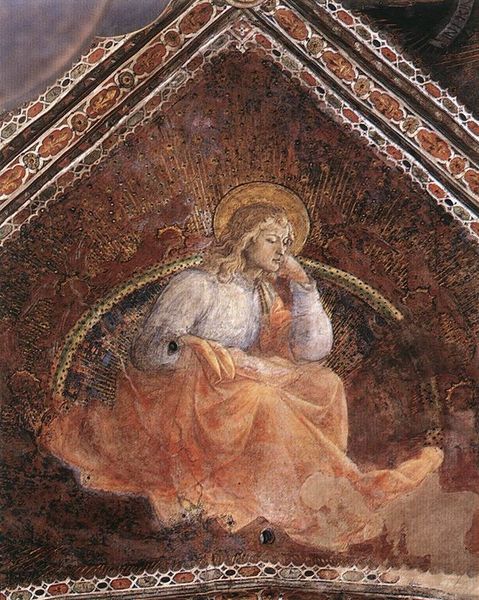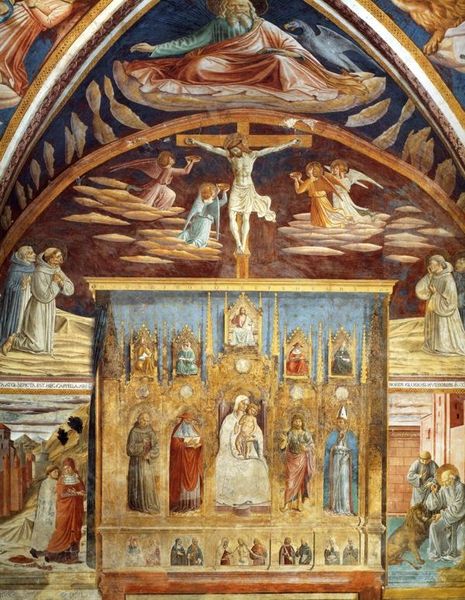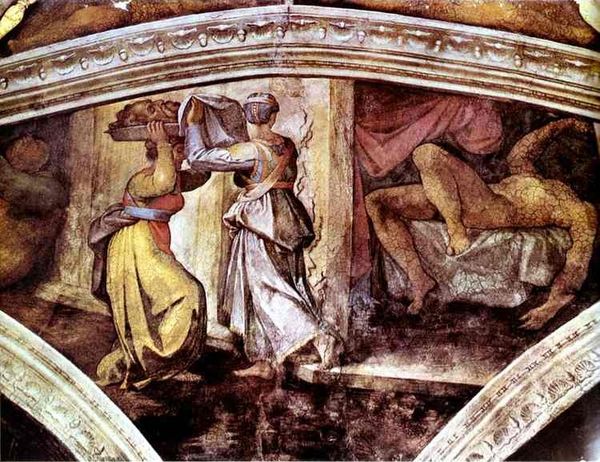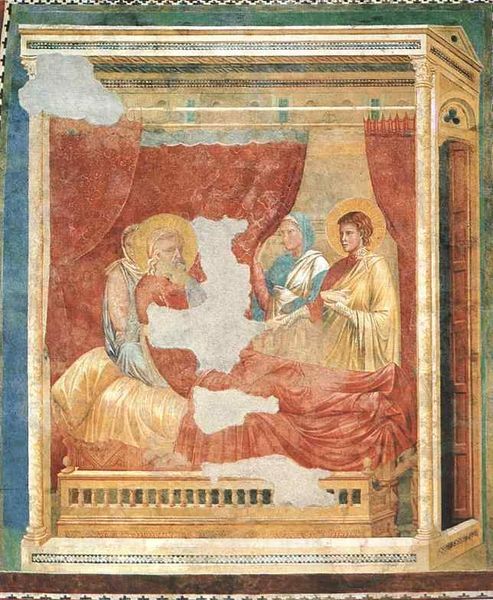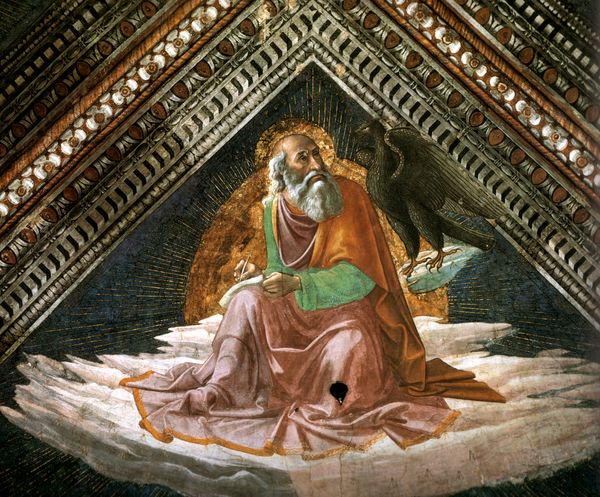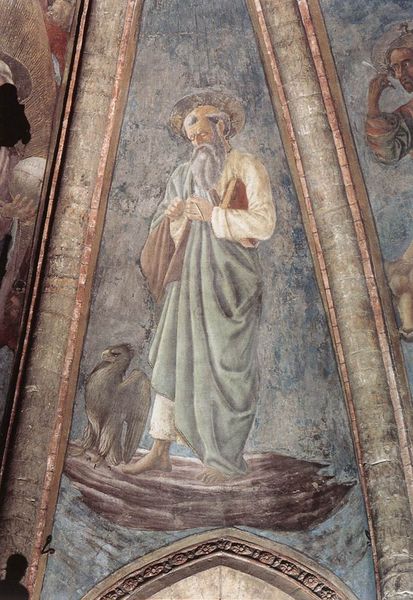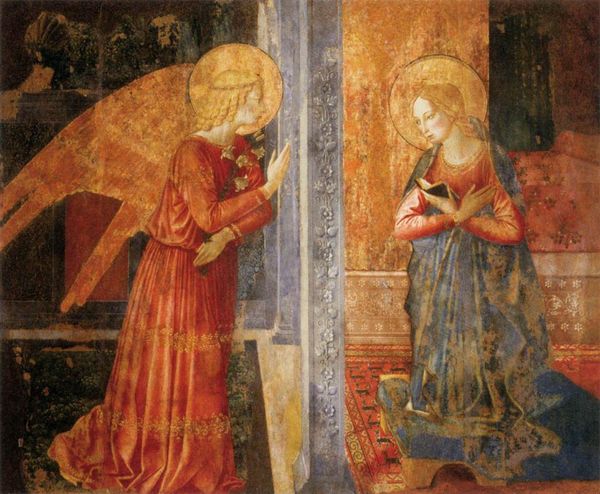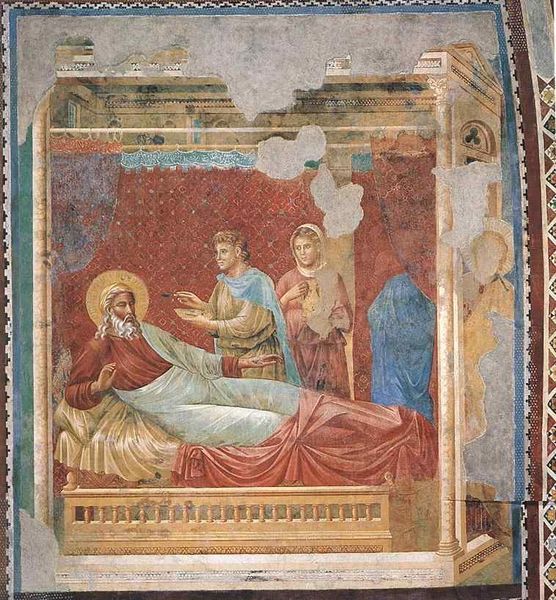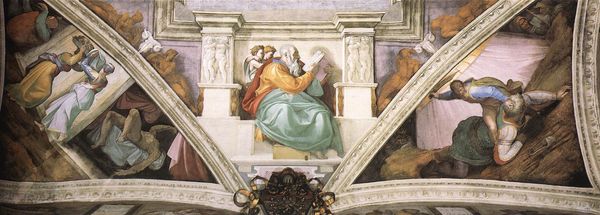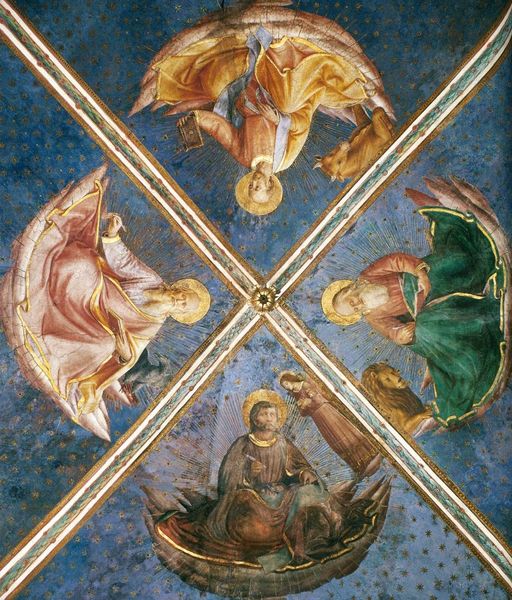
painting, fresco
#
portrait
#
painting
#
fresco
#
oil painting
#
christianity
#
history-painting
#
academic-art
#
italian-renaissance
Copyright: Public domain
Curator: This is a detail from Benozzo Gozzoli's fresco cycle, specifically "St. Luke" from "The Four Evangelists," dating back to approximately 1465. Editor: Woah, talk about floating in contemplation! He’s like a thoughtful cloud with a book and a… cow? It’s oddly serene. Curator: The ox is, of course, one of the iconic symbols for Luke within Christian iconography. Beyond the religious aspects, however, it's worth looking at this piece within the broader context of Renaissance ideas about scholarship, faith, and artistic representation of both. The historical construction of St. Luke's identity is pretty fascinating when you start to unpack the sociopolitical meanings embedded in the scene, including the ox. Editor: Well, beyond that rich history, the way he’s just casually lounging amongst the clouds… It's like he’s thinking, "Yep, just me, my bovine buddy, and the celestial script.” I'm drawn in. Is it a painting? Fresco? Curator: It is indeed a fresco, painted directly onto the plaster wall. Look at the textures created here! And notice how Gozzoli has embedded this figure within the architecture to heighten the symbolic impact of Christian faith on the architecture of everyday life in Florence during this period. It is the Italian Renaissance, so of course, he's situated in Florence! Editor: Florence was pretty cool for Art. Now, with Luke's color palette of gold, white, blues and browns, the fresco comes together for me! Curator: These vibrant hues are quintessential Renaissance colors but note also their interplay with the setting, creating visual connections with liturgical life as expressed via fresco medium and architectural placement in Quattrocento Florence. Editor: Definitely puts the awe in awesome. You know? I could gaze at the detail, all these angels. There is something almost dreamlike in this artwork. Curator: I agree. Through attention to details of identity and technique, viewers can reflect not only on this saint’s traditional iconography but also the material conditions that gave shape to these enduring representations in this period. Editor: Well, my dreamy ponderings on lounging saints have taken on a whole new layer. That was an absolute feast for the imagination and a brain boost too. Curator: Indeed. This blend of devotion, scholarly focus, and artistry provides some significant things to consider for understanding identity in art and the sociopolitical role for artistic work from a Renaissance perspective.
Comments
No comments
Be the first to comment and join the conversation on the ultimate creative platform.
